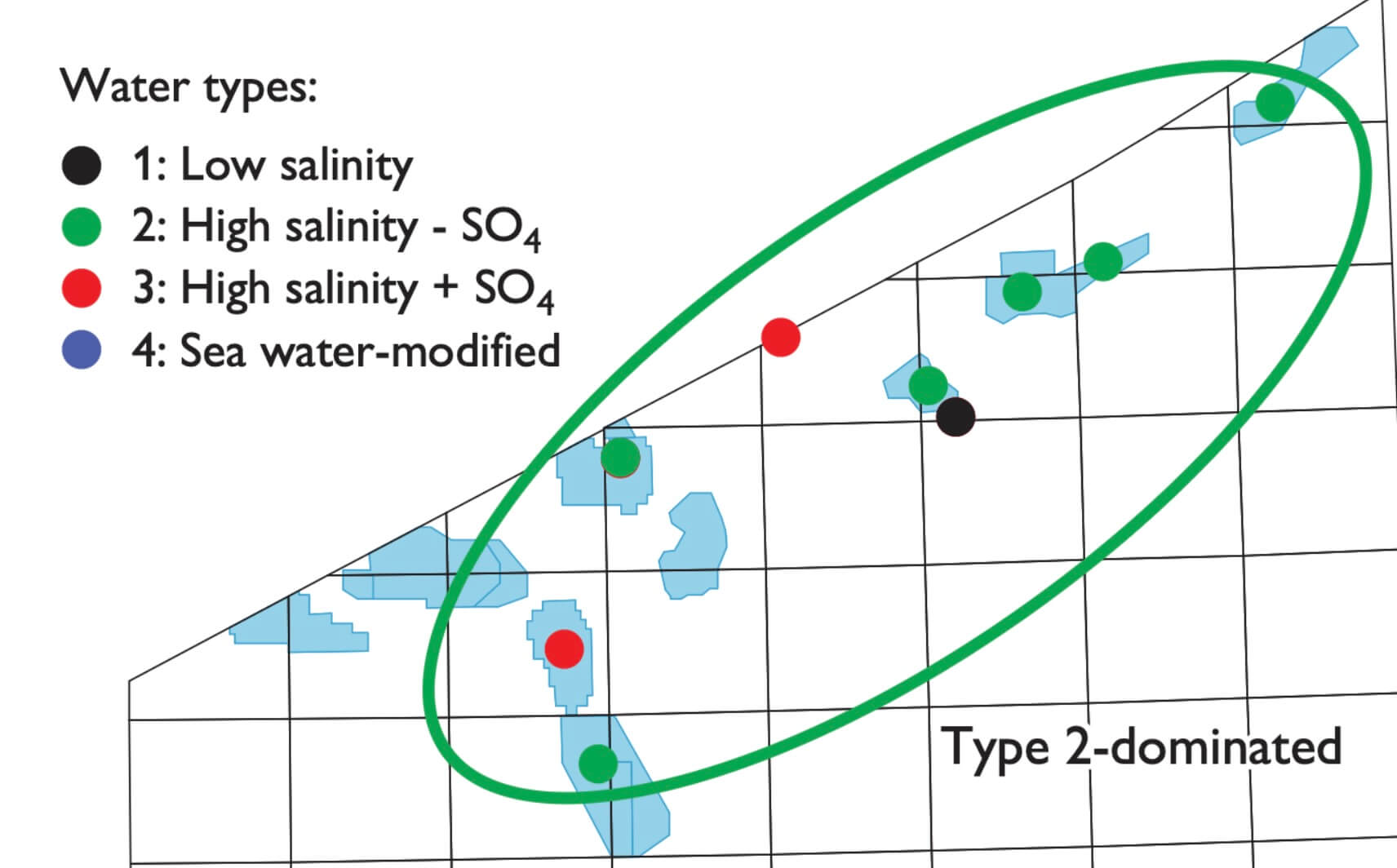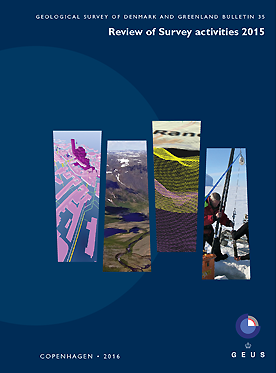
How to Cite
Share
Abstract
Injection of chemically tuned, ‘smart’ water in oil reservoirs may increase both oil recovery rates and the total recovery (e.g. Morrow & Buckley 2011; Austad 2013; Zeinijahromi et al. 2015). This kind of water management has gained increased importance in the Danish North Sea reservoirs due to decreasing sweep efficiency in maturing oilfields. Knowledge about the compatibility of the injected water with local formation waters is, however, a prerequisite for successful implementation. Here, we present a regional overview of formation waters from oil reservoirs in the Danish North Sea, which comprise three main types of formation brine, and one type of modified seawater related to extensive water flooding. The water types show a distinct geographical distribution, which reflects original connate waters that are modified by saline brine being either depleted or enriched in SO42–.
How to Cite
Share
Downloads
Editors Adam A. Garde, Ole Bennike, Kristine Thrane and W. Stuart Watt
This issue of Review of Survey Activities presents a selection of 24 papers reflecting the wide spectrum of current activities of the Geological Survey of Denmark and Greenland, from the microscopic to the plate-tectonic level.
The Survey’s activities in Denmark are illustrated [...]










